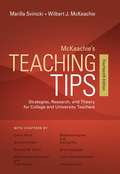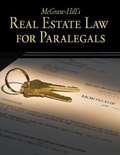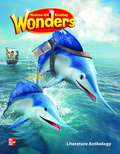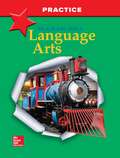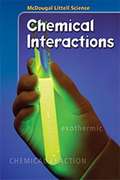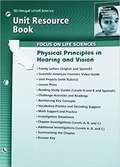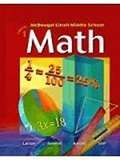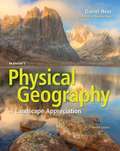- Table View
- List View
Me pregunto … Por qué estornudamos y otras cosas (¡Arriba la Lectura!, Level N #90)
by Maureen Mecozzi Lisa Chesters¿Te has preguntado por qué estornudas o por qué te da hipo? Para averiguarlo, lee estas preguntas y respuestas sobre el cuerpo humano. NIMAC-sourced textbook
Me llamo Amelia Earhart (¡Arriba la Lectura!, Read Aloud Module 10 #3)
by Brad Meltzer Christopher EliopoulosNIMAC-sourced textbook
Me encantaría tener un cachorro (¡Arriba la Lectura!, Level Q #31)
by Sharon Parsons¿Te gustaría cuidar un cachorro? Es una gran responsabilidad. Tendrás que aprender a entrenarlo desde su primer año de vida. Aquí encontrarás consejos para el cuidado de los cachorros. ¡Y también verás por qué un perro puede llegar a ser tu mejor amigo! NIMAC-sourced textbook
Mckeachie's Teaching Tips (Fourteenth Edition)
by Wilbert Mckeachie Marilla SvinickiThis indispensable handbook provides helpful strategies for dealing with both the everyday challenges of university teaching and those that arise in efforts to maximize learning for every student. The suggested strategies are supported by research and adaptable to specific classroom situations. Rather than suggest a "set of recipes" to be followed mechanically, the book gives instructors the tools they need to deal with the ever-changing dynamics of teaching and learning.
Mcgraw-Hill's Real Estate Law for Paralegals
by Lisa Schaffer Andrew WieteckiReal Estate Law for Paralegalspresents students with a clear, easy-to-understand, and exciting text in which they will learn about real property, personal property, and all of the facets inherent in real estate. The text includes a chapter dedicated solely to real estate closings. The students have access to numerous exercises, cases, and hands-on learning assignments (including sample forms) covering topics ranging from "Regulations and Encumbrances" to "Recording Statutes and Examinations. " The Paralegal Supersite Site
Mcgraw-Hill Reading Wonders Grade 2 CCSS Reading/Language Arts
by Donald R. Bear Janice A. Dole Diane August Jana Echevarría [et al.]Literature textbook
Mcgraw-Hill Language Arts (Grade #3)
by McGraw-HillYour ideas are the heart of your writing. They can also be called the main idea or theme. They must be clearly presented. Your writing should include details that keep the reader's attention and show what is really important about your topic.
Mcgraw-Hill Language Arts (Grade #3)
by McGraw-HillPractice pages provide exercises to accompany lessons presented in McGRAW-HILL LANGUAGE ARTS. At-home activities are provided on every page. Practice pages can be used as students work through the unit.
Mcgraw - Hill Science (Grade 4, Texas edition)
by Lucy Daniel Joanne Vasquez Jay Hackett Richard Moyer Pamela Stryker Prentice BaptisteScientists study books and articles to find out facts. They also ask questions. They always try to test their ideas for themselves.
Mcdougal, Littell Literature And Language: Blue Level
by Robert S. BooneThis textbook contains plenty of reading materials of great literature-fiction, non-fiction, poetry, drama, etc.
Mcdougal Littell Science: Chemical Interactions (Grades 6-8)
by Rita Ann Calvo Kenneth Cutler James TrefilIn the simplest terms, physical science is the study of what things are made of and how they change. It combines the studies of both physics and chemistry. Physics is the science of matter, energy, and forces. It includes the study of topics such as motion, light, and electricity and magnetism. Chemistry is the study of the structure and properties of matter, and it especially focuses on how substances change into different substances.
Mcdougal Littell Science California: Physical Principles in Hearing and Vision Unit Resource Book, Grade 7, Life Science
by McDougal LittelMcdougal Littell Reading Literature: Red Level
by Mary Ann Trost Jacqueline L. ChaparroLiterature textbook.
Mcdougal Littell Middle School Math: Course 1
by Larson McDougal-Littell Publishing StaffMcDougal Littell Middle School Math, Course 1
Mcdougal Littell Middle School Math Indiana Students Edition Course 1
by Ron Larson Laurie Boswell Timothy Kanold Lee StiffMcdougal Littell Middle School Math strengthens the students understanding and provides the tools that the students need to excel in mathematics. It has written lessons with frequent step-by-step examples which make even difficult math concepts and methods easier to understand.
Mcdougal Littell Literature: The Interactive Reader Plus
by Mcdougal LittellThe InterActive Reader Plus is a new kind of literature book. As you will see, this book helps you become an active reader. It is a book to mark on, to write in, and to make your own. You can use it in class and take it home.
Mcdougal Littell Literature: British Literature (Pennsylvania Edition)
by Mcdougal LittellLiterature textbook, focusing on British literature, for Pennsylvania students.
Mcdougal Littell Literature, Grade 10 (Michigan Edition)
by Mcdougal LittellThis textbook is closely aligned to the Michigan High School Content Expectations for English Language Arts. Every time you learn new information or practice a skill, you are mastering one of the expectations. Each unit, each reading selection, and each workshop in this textbook connects to at least one of the expectations. The expectations covered in each section of a unit are listed on the opening page of the section.
Mcdougal Littell Literature and Language, Yellow Level (Grade #11)
by James Marshall Arthur N. Applebee Judith A. Langer Andrea B. BerrnúdezThis book is based on a unique philosophy--that what you bring to this book is just as important as what the book brings to you. This means that your own experiences become the basis for your involvement with the literature and activities. The special features in Literature and Language promote this relationship between you and the text.
Mcdougal Littell Literature and Language, Red Level (Grade #7)
by James Marshall Arthur N. Applebee Judith A. Langer Andrea B. Bermudez Susan Hynds Donna E. NortonLiterature and Language is different from other books you have used in two important ways. First, it is organized to help you tie together your study of the language arts--literature, writing, and language. The literature, chosen for its appeal to your life, serves as the starting point for all your learning. Students like you helped to select the stories, plays, articles, and poems that appear in this book (see their names on page vi). You'll find stories that have been favorites for many generations, as well as works by current writers. Second, as you use this book, you will find that it does not present a "right" way to understand a story or to write a paper. Instead, it requires you to think for yourself. It asks you to form your own opinions and make your own decisions.
Mcdougal Littell Literature and Language, Orange Level (Grade #9)
by James Marshall Arthur N. Applebee Judith A. Langer Andrea B. BerrnúdezThis book is unlike any textbook you have ever used. It is based on a unique philosophy--that what you bring to this book is just as important as what the book brings to you. This means that your own experiences become the basis for your involvement with the literature and activities. The special features in Literature and Language promote this relationship between you and the text.
McKnight's Physical Geography: A Landscape Appreciation, 12th Edition
by Dennis G. Tasa Darrel HessExplore the changing global environment with real-world examples and mobile field trips Continuing Tom L. McKnight's well-known thematic focus on landscape appreciation, Darrel Hess offers a broad survey of all of the physical processes and spatial patterns that create Earth’s physical landscape. McKnight’s Physical Geography: A Landscape Appreciation provides a clear writing style, superior art program, and abundant pedagogy to appeal to a wide variety of readers. <P><P>The 12th Edition offers a truly meaningful integration of visualization, technology, and the latest applied science, providing essential opportunities to teach and engage readers in these processes and patterns. Topics that are tied to readers’ real-world concerns such as global environmental change, along with new videos, photography, online lab resources, and updated interactive tools, make it the most effective learning program for physical geography.

